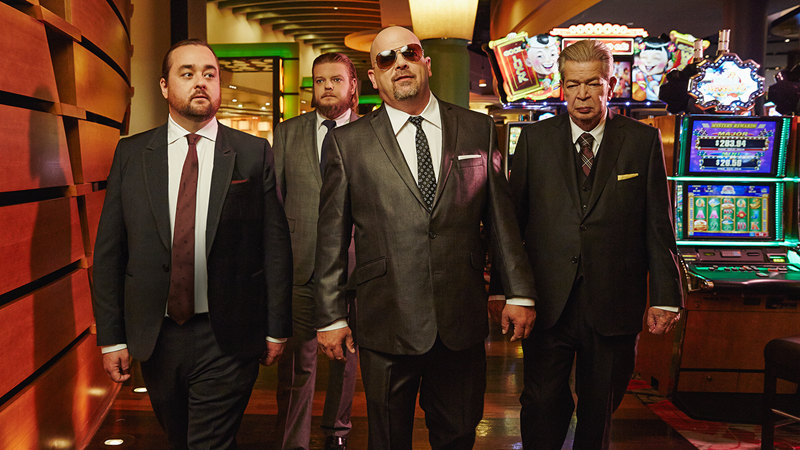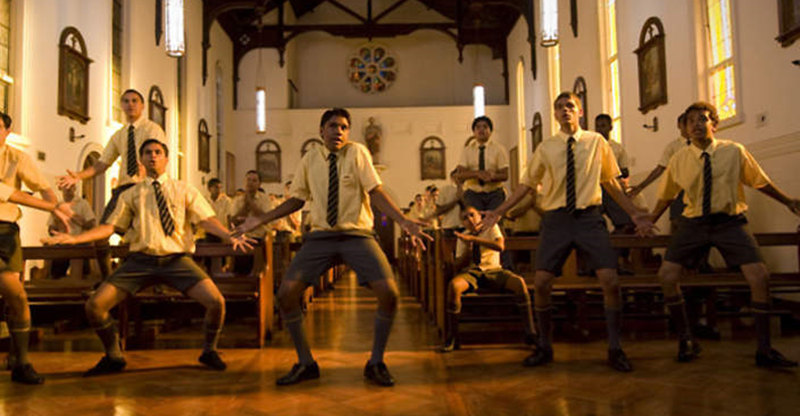I hear Peter Jackson is remaking “The Lord of the Rings,” casting Keith Richards as Gandalf, Johnny Depp as Aragorn, and Tom Cruise as Frodo. He’s thinking about going back to the actual locations in Middle Earth to shoot it.
My wife and I saw the original 1973 version of “The Wicker Man” in a theater shortly after we got married. The movie seemed at the time an unassuming little British horror-mystery that both of us enjoyed, especially for its mounting suspense, its subtly creepy atmosphere, its folksy background music, and its memorably satisfying ending. The filmmakers had taken a script by Anthony Shaffer (“Frenzy,” “Sleuth,” “Murder on the Orient Express”), based on the novel “Ritual” by David Pinner, and turned it into a picture that eventually became a cult classic.
I haven’t seen the original since ’73, but I have no reason to believe it wouldn’t stand up as well today as it did back then. So, why this 2006 remake? I understand it was star Nicolas Cage’s idea. He said he watched the original and it so unnerved him, he wanted to make it anew. I seem to recall a similar rationale for the remake of “Psycho.” Hollywood never seems content to leave well enough alone.
Writer-director Neil LaBute (“In the Company of Men,” “Nurse Betty,” ‘Your Friends and Neighbors,” “The Shape of Things”) adapted this new version, so he’s one of the fellows most responsible for its misfire. The movie manages to do none of the things that made the first movie so notable. It develops practically no suspense, creates no atmosphere, employs nondescript music, and takes most of the spark out of the old ending.
But in addition to LaBute’s mismanagement of the subject matter, a good share of blame must lie with Nicolas Cage. His character in the film generates no sympathy, and, thus, we don’t care much what happens to him. He spends most of his screen time whining, harping, nagging, frowning, arguing, and shouting at people. His interactions with other characters are shallow, and we discover almost nothing in his personality to make us want to root for him.
Cage plays Edward Malus, a California Highway Patrolman haunted by a horrific automobile accident he witnessed in which a mother and her young daughter burned to death. It greatly distresses him, and because he blames himself for the mishap, it causes him constant nightmares. It’s at this time that an old fiancée, Willow (Kate Beahan), whom he hasn’t seen in seven or eight years, contacts him about the disappearance of her young daughter, Rowan. Coincidentally, the snapshot she sends him of the daughter looks just like the child in the accident. He determines to take some time off work and help his former fiancée find the lost girl.
Willow now lives in a female-dominated commune on a private island, SummersIsle, in Puget Sound. It’s an idyllic setting, but it’s very secluded, totally isolated, in fact, and very strange. Unfortunately, strange does not equal scary or even creepy; the commune is simply odd. The more Malus investigates the girl’s disappearance, the more mysteries he uncovers on the island, and the more danger he sees. Malus learns that these women practice occult rites, pagan rituals, ceremonies of death and rebirth, and he’s knee-deep in the middle of it. The women’s main harvest is honey, the few men on the island are mindless drones, the island’s leader, Sister Summersisle (Ellen Burstyn), is the Queen of the hive, and Malus has a deadly allergy to bees. What’s more, the only way on or off the island is by private plane or boat, and, naturally, there are no telephones on the place, and his cell phone won’t work. It’s more than a bit silly and pat.
The thing is, I remember the original movie proceeding calmly and logically through the mystery. That’s what gave it its increasing sense of quiet menace and kept us guessing until the very end. This new version is anything but calm or logical; it is frenetic and irrational, telegraphing almost every event an hour in advance. When the end arrives, we’ve seen it coming a mile away.
You’d think the movie would make some connection between the automobile accident Malus witnessed and the circumstances on the island, but your thinking would be wrong. There appears to be no connection. The accident just gives Malus continual nightmares, which in turn gives the writer-director plenty of opportunities to apply that old standby, the dream sequence: Is it really happening or is it a figment of the character’s imagination? Fool me once, I’m impressed. Try to fool me repeatedly, I’m annoyed.
Malus’s investigations are a shambles. The first thing he does is doff his Highway Patrol uniform and don a coat and tie, which he wears almost the whole rest of the film, despite the fact that he’s on a rugged, forested island in the Pacific Northwest. Then he flashes his California CHP badge at everyone he meets, including children, waving it around like Inspector Clouseau and threatening folks with arrest if they don’t cooperate, notwithstanding his having no jurisdiction in Washington State. His idea of interrogating people is to ask them a superficial question or two, and then, when he doesn’t get the answers he wants, to argue with them and start yelling. By the time he’s bicycling into a cluster of beehives or swimming around in an underground crypt or running through the woods in a bear suit, it’s hard to take any of it seriously.
As I say, sometimes it’s best to let well enough alone.
Video:
The disc renders the movie’s original 2.35:1 aspect ratio at about 2.15:1, anamorphic, across my screen. The image varies from a little soft and fuzzy to fairly crisp and clean, perhaps the result of the engineers using a bit rate that fluctuates from scene to scene, sometimes very high, sometimes very average. Black levels are solid, though, and grain is at a minimum. In the beginning, the colors are rather pale, but to be fair, they intensify as the movie goes on. However, while they look bright enough, they do always seem entirely accurate, particularly in facial tones. Maybe I’m just spoiled by all the high-definition stuff I’ve been watching lately, I dunno.
Audio:
The Dolby Digital 5.1 audio reproduction presents a good, clear, well-balanced midrange; decent bass, and occasionally strong dynamics. Moreover, it offers some realistic environment noises in the surrounds, and, later, voices. It’s not the kind of soundtrack you’d want to listen to on its own, but it does its job.
Extras:
The primary appeal of the extras is that the disc contains two editions of the movie: the PG-13 rated theatrical version and an unrated version with an alternate end sequence. Both versions are identical in length at 102 minutes, with the unrated version substituting a rather violent sequence toward the finish for the theatrical version’s coda. On the audio commentary, the filmmakers tell us that the film they originally submitted to the motion-picture ratings board got them an R rating, which they didn’t want; so they changed the ending to get a PG-13. What we have in the unrated edition, then, is essentially the original R.
In addition to the two versions of the movie, there are audio commentaries for each with writer-director Neil LaBute, co-stars Leelee Sobieski and Kate Beahan, editor Joel Plotch, and costume designer Lynette Meyer; twenty-five scene selections (but no chapter insert); a widescreen theatrical trailer; English as the only spoken language; and English, French, and Spanish subtitles.
Parting Shots:
I see there are now several different editions the 1973 version of “The Wicker Man” available on DVD, any one of which would probably make a better first choice in this material than the 2006 version reviewed here. Interestingly, the ’73 version was rated R, which, as I remember, was more for nudity than for violence. Times change, not always for the better.
Besides, Christopher Lee was in the original. How can you beat that? Certainly not by dressing up Nicolas Cage in a bear suit.


